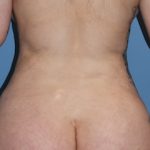Rhinoplasty in the Deviated Nose
The correction of the crooked nose is one of the most challenging deformities in rhinoplasty surgery. It is difficult because it requires improvement of two nasal problems; a functional breathing problem and an aesthetically asymmetric appearance. The goals of this type of rhinoplasty is the creation of a rigid and straight nose that has an Read More…


